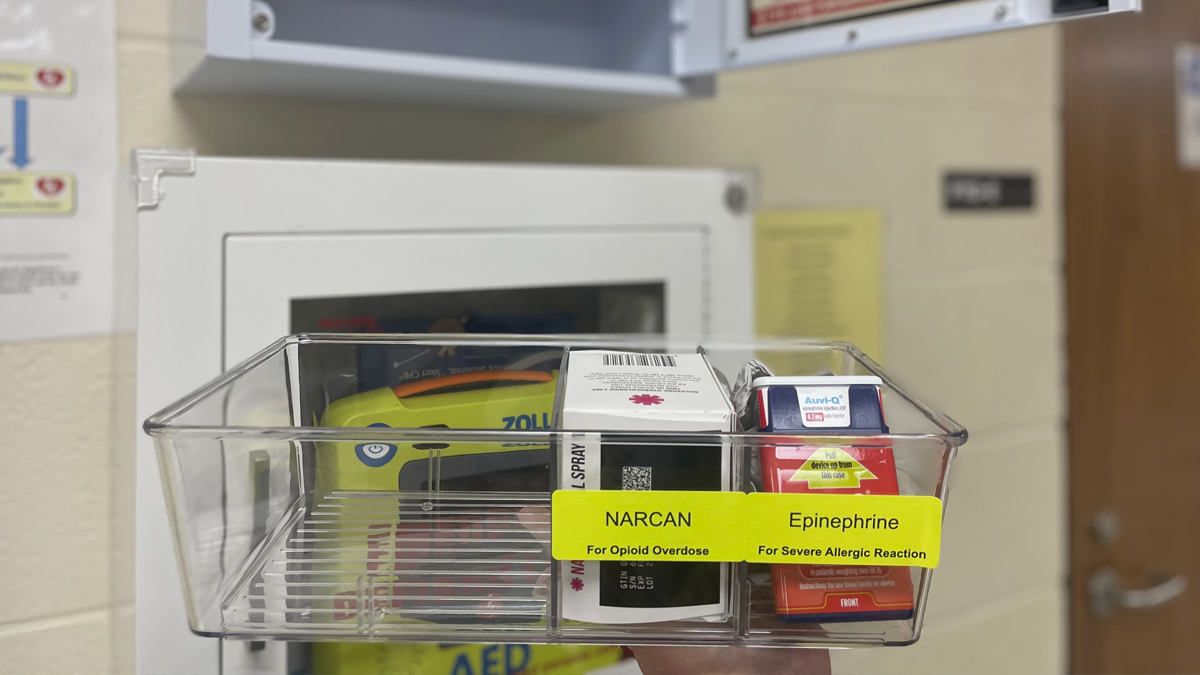Opioids can lure anyone, anywhere from any walk of life into its den of addiction. That the deadly prescription pain medication has found its way into school systems nationwide is a tragic reality. Fortunately for the Charleston County School District – one of the largest districts in the state, with 49,000 students in 83 schools – the 50+ year-old Charleston County Medical Society’s School Health Committee advises school leaders about health-related issues. Over the years, its areas of concern have changed from too few school nurses to immunizations to behavior and to mental health concerns.
The opioid epidemic now appears to be the most pressing issue. With the support of the School Health Committee, CCSD has built a partnership with substance abuse treatment programs such as the Charleston Center CCSD Substance Use Program, run by ADAPT – alcohol and other drug alternative program for teens – Coordinator Linda Ballinger and school district Nursing Director Ellen Nitz. Together, they provide educational programs promoting the use of the overdose reversal medication naloxone – known commonly as Narcan – while also training district nursing staff, first responders and all other district employees on the use of and availability of the medication in each school.
As part of an overall emergency preparedness plan, each CCSD campus has emergency stations that are positioned for a three-minute response time and contain an automated external defibrillator, a list of contact information for on-site first responders and an emergency medications kit that includes two doses of Narcan, gloves – in case the victim has been exposed to fentanyl, which can negatively affect the caregiver – and an EpiPen for allergic reactions. Nitz, who oversees the plan and assembled each of the 205 packets that are strategically placed throughout the district, said the system prepares nurses for lifesaving emergencies. She added, “Every life is worth saving. And because our mission is to do everything we can to keep our schools throughout the district safe, approximately 90% of our staff are trained for emergency preparedness.”
According to Dr. Janice Key, a professor of pediatrics at the Medical University of South Carolina and director of the Boeing Center for Children’s Wellness, Narcan attaches to the opioid receptor and blocks its effects. “You don’t have to be sure that someone is experiencing an opioid overdose, though. Narcan can’t hurt anybody. No harm can come of it, and nothing will happen if it’s something else,” she said, adding, “Everyone should carry Narcan, which is administered as a nasal spray so that it’s easy to give to an unconscious person. You can get the medication for free at any police station or the health department, and it’s also on shelves at pharmacies.”
Dr. Key pointed out that each of the harm-reduction kits includes a list of the signs of an opioid overdose as well as simplified steps of what to do if you encounter someone who may be experiencing an overdose. Signs include altered behavior, unconsciousness, shallow breathing, pale or blue skin or nails, pinpoint pupils and a slow pulse. If a person exhibits any of these symptoms, immediately dial 911, attempt to wake the victim with a hard sternum rub, administer Narcan into the victim’s nose, keep trying to wake the victim up and turn them on their side to prevent choking.
Because of these important efforts the CCMS and CCSD have invested into the schools’ wellness programs, the district recently received recognition from the White House. Scott Frey, senior strategic advisor with the Office of National Drug Control Policy, offered the following words of congratulations: “Thank you for your commitment to the White House Challenge to Save Lives from Overdose. The White House is excited to list your organization and its actions in a fact sheet, that was published on Oct. 8, 2024.” He added: “We’re grateful for your efforts to save lives from overdose, and we hope your good work inspires others to join the challenge.”
To learn more about participating in the White House Challenge to Save Lives from Overdose, visit whitehouse.gov/savelivesfromoverdose/. For more information about the work the CCMS is doing within and beyond the school system, visit charlestonmedicalsociety.org.
By Sarah Rose






